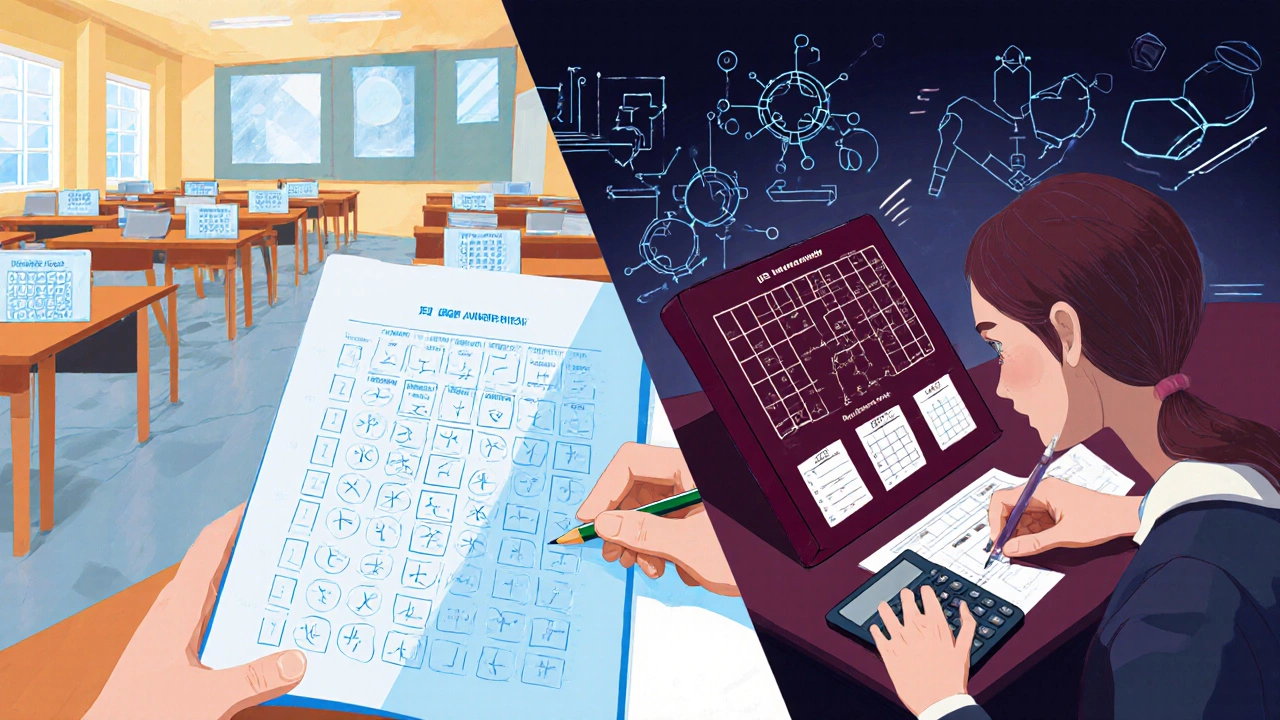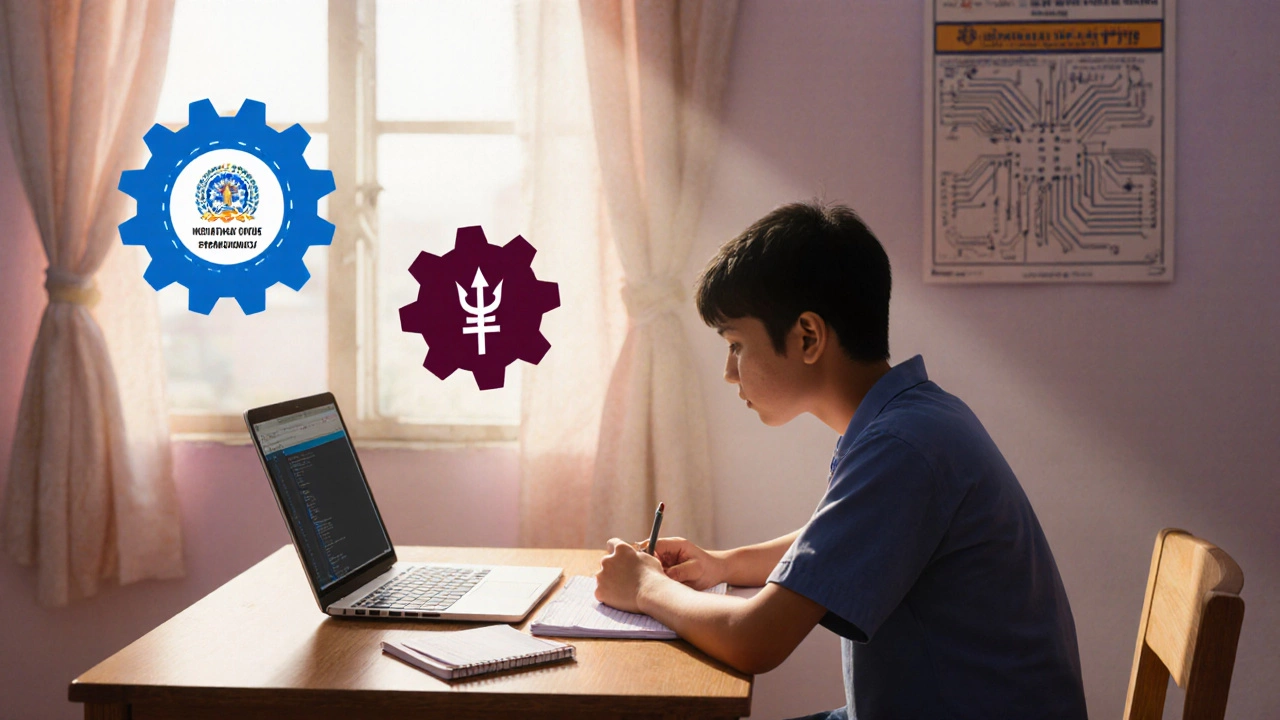If you’re wondering JEE Main vs JEE Advanced, you’re not alone. Every year thousands of Indian students stare at two acronyms and wonder which one will decide their future. The truth is both exams serve different purposes, have distinct formats, and open separate doors. This guide breaks down everything you need to know so you can plan your study strategy with confidence.
Understanding the JEE ecosystem
India’s engineering dream starts with the Joint Entrance Examination, a two‑stage testing system managed by the National Testing Agency (NTA). The first stage, JEE Main, filters candidates for three pathways: admission to NITs, IIITs, and other centrally funded institutes, plus eligibility for the second stage. The second stage, JEE Advanced, determines who gets into the coveted Indian Institute of Technology (IIT) campuses.
JEE Main: the gateway exam
Purpose: JEE Main is the first hurdle. It decides who can apply for NITs, IIITs, and who meets the eligibility to sit for JEE Advanced.
Eligibility: Candidates must have passed Class 12 (or equivalent) in the previous year, or be appearing for it now. The maximum age limit is 25, with a maximum of two attempts per year, and a total of four attempts across years.
Exam pattern: The test is conducted in both online (Computer Based Test) and offline (Pen‑and‑Paper) modes. It comprises three subjects - Physics, Chemistry, and Mathematics - each with 20 multiple‑choice questions (MCQs) and 10 integer‑type questions, totaling 90 marks per subject.
Scoring: Positive marking for correct answers (+4 for MCQs, +4 for integers) and negative marking for incorrect MCQs (‑1). No penalty for integer‑type questions. The score is scaled to a percentile, which determines the All‑India Rank (AIR).
Cut‑off trends: In 2024, the gender‑wise cut‑off for General category was around 75 percentile for Paper‑1 and 85 percentile for Paper‑2. Those numbers guide how high you need to aim.
JEE Advanced: the elite filter
Purpose: JEE Advanced selects candidates for the 23 IIT campuses and a few other premier institutes like ISM Dhanbad.
Eligibility: Only the top 2.5 % of JEE Main qualifiers (approximately 250,000 candidates) are eligible. You must have a minimum of 75 % marks in Physics and Mathematics (or 65 % for SC/ST) in Class 12. Attempts are limited to two consecutive years.
Exam pattern: The format changes every year, but typically involves two papers, each lasting three hours. Both papers test Physics, Chemistry, and Mathematics through a mix of MCQs, numerical answer type (NAT), and match‑the‑column questions. The total marks range between 360 - 540 depending on the year.
Scoring: No negative marking for most question types, but some MCQs carry a -1 penalty for wrong answers. The final rank is based on the sum of scores from both papers.
Cut‑off trends: In 2024, the opening cutoff for the General category was 61 % in Paper‑1 and 64 % in Paper‑2, translating to an overall rank around 2,00,000 to get a seat in an IIT.

Side‑by‑side comparison
| Aspect | JEE Main | JEE Advanced |
|---|---|---|
| Conducting Body | National Testing Agency (NTA) | IITs (Joint Admission Board) |
| Eligibility | Class 12 pass, age ≤25, max 4 attempts | Top 2.5 % of JEE Main, 75 % in PCM, max 2 attempts |
| Exam Mode | Online & offline (CBT/P&P) | Online (CBT) only |
| Number of Papers | 1 (Paper‑1) or 2 (Paper‑1 & Paper‑2) | 2 papers, each 3 hrs |
| Total Marks | 360 (120 per subject) | 360‑540 (depends on year) |
| Difficulty Level | Intermediate (high‑school level) | Advanced (first‑year engineering level) |
| Purpose | Admission to NITs/IIITs & eligibility for Advanced | Seat allocation in IITs & select premier institutes |
| Typical Cut‑off (General) | ~75‑85 percentile | ~61‑64 % (overall) |
Choosing where to focus your preparation
Most students start with JEE Main because it’s the required gateway. However, if your goal is an IIT, you need a strategy that covers both exams efficiently.
- Identify your target institute. If you’re aiming for an NIT, a solid JEE Main score (above 90 percentile) may be enough.
- Assess your baseline. Take a mock JEE Main test. If you rank within the top 2‑3 % nationally, you can safely allocate time to JEE Advanced preparation.
- Plan a two‑phase timeline. Phase 1 (months 1‑6) focuses on mastering NCERT physics, chemistry, and mathematics concepts-crucial for both exams. Phase 2 (months 7‑12) adds Advanced‑level problem solving, previous year papers, and time‑management drills.
- Allocate resources wisely. Use standard books like H.C. Verma for physics, O.P. Tandon for chemistry, and R.D. Sharma for mathematics for the Main level. For Advanced, supplement with Irodov (physics), Puri’s organic chemistry, and Arihant’s Advanced mathematics.

Common pitfalls and pro tips
Pitfall 1: Ignoring the exam pattern. Many students study endlessly but forget that JEE Advanced often includes Numerical Answer Type questions that require exact values. Practice with calculators and mental math to avoid careless mistakes.
Pro tip: Use timed mock tests. Simulate the real environment at least twice a month. Analyze each mock’s error log-categorize mistakes as “conceptual”, “calculation”, or “time pressure”.
Pitfall 2: Over‑relying on shortcuts. While shortcut techniques can save time, they sometimes hide underlying concepts. If a shortcut fails, you’ll lose marks. Balance shortcuts with deep understanding.
Pro tip: Master the NCERT. Both exams source up to 30 % of their questions directly from NCERT textbooks. A clear grasp of these chapters boosts accuracy and confidence.
Pitfall 3: Neglecting the negative marking in JEE Main MCQs. A rash guess can drag your score down. Learn the process of elimination and answer only when you’re at least 70 % sure.
Pro tip: Keep a formula sheet. Write down key formulas for each topic (e.g., kinematic equations, electrostatics, organic reactions) and revise daily. Muscle memory helps during the high‑pressure exam.
What’s next after the exams?
Once you receive your All‑India Rank, the counseling process begins. For JEE Main qualifiers, the Joint Seat Allocation Authority (JoSAA) opens seat allotment for NITs, IIITs, and GFTIs. For JEE Advanced qualifiers, the same platform allocates IIT seats based on your rank and preferences. Keep your documents ready-10th and 12th mark sheets, category certificates, and photograph-to avoid delays.
Frequently Asked Questions
Can I appear for JEE Advanced without taking JEE Main?
No. JEE Advanced eligibility strictly requires a valid JEE Main rank within the top 2.5 % of all candidates.
How many attempts are allowed for JEE Main?
You can take JEE Main twice a year, up to a total of four attempts across your academic career.
Is there a negative marking in JEE Advanced?
Only certain MCQs carry a -1 penalty for wrong answers. Numerical Answer Type and match‑the‑column sections have no negative marking.
What is the minimum required percentile for JEE Main?
The cut‑off varies yearly and by category, but generally a 75 percentile for General candidates is the baseline for admission to NITs.
Should I study the same books for both exams?
Start with NCERT and standard Main‑level books. When you’re consistently scoring above 80 percentile, add Advanced‑level texts for deeper problem‑solving practice.

